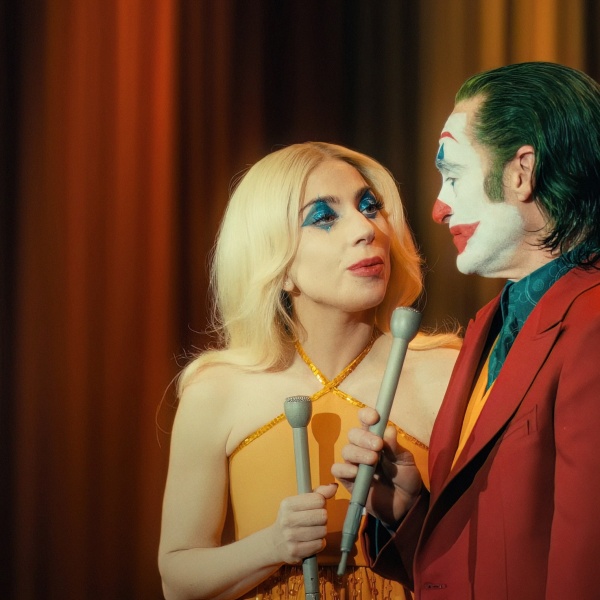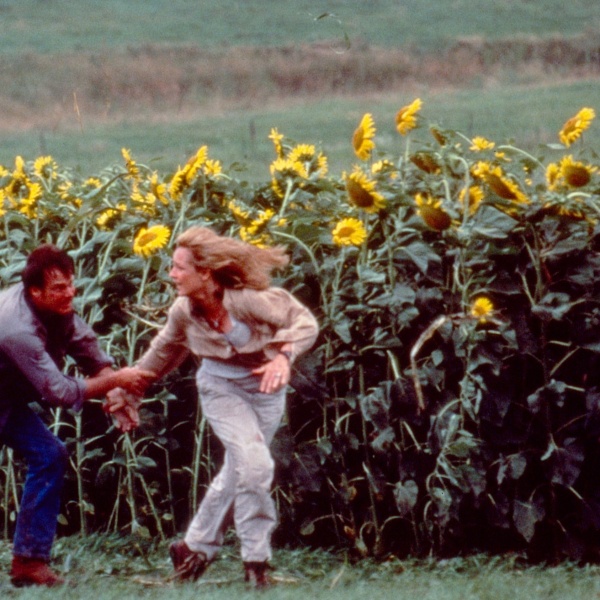
Ah, “Memento.” The sophomore feature of a filmmaker that, for better or worse, continues to work in Hollywood with mainstream appeal, while he, as Guillermo del Toro puts it, manages to “still remain strange.” Beginning with “Memento” and now with the Oscar-nominated, “Inception” Christopher Nolan‘s films always seem to leave us scratching our heads — but he, and we, wouldn’t have it any other way.
Del Toro recently sat down with the self-described puzzle-maker following a screening of “Memento” at the American Cinematque’s Egyptian Theatre. Much of the discussion focused on the aforementioned memory-loss picture that, despite the skepticism of the “common wisdom” as del Toro so diplomatically put it, went on to huge success with audiences. Both written by Nolan, “Memento” famously came out of a collaboration with younger brother, Jonathan Nolan.
“I was moving to Los Angeles and I met my brother in Chicago and [we] drove my dad’s car… on the course of the drive we ran out of things to talk about, so he told me a story he was writing, a short story, of a man who couldn’t form new memories, yet was on a quest for revenge, holding onto the facts of his investigation by writing tattoos on his body. I immediately said, ‘I think it would make a terrific film, can I take that and write a screenplay from it?’” It turns out Nolan finished the script and shot the film before his brother ever finished his version of the story, which was published in Esquire a week before the film was released. “It’s a brilliant short story,” Nolan said. “And the reason it took him so long was I found my way of telling it sort of subjectively before he did,” he laughs, “I was sitting around my apartment one day trying to write the script, drinking too much coffee and thinking about banging my head against the wall when I suddenly realized, oh, if you revert the structure, if you tell it in reverse chronology then you deny the audience the information that the protagonist doesn’t know, so in one sense, you are putting the audience in this guy’s place.”
“There is a great moment, [a] beautiful calculation, the way you reveal the big visual motif ,” pointed out del Toro, “The tattoos on his chest.” “Well the fun thing is that you get to discover it with him,” Nolan replied, “and that seemed a very unusual thing to do, so he sees the thing on his hand and thinks it’s written there and tries to wash it off, but he can’t, and then sees a little trace of another, that was something that I thought would be really fun was to put the audience into this guy’s shoes of not even being able to trust his own body.”
The original DVD release of the film had a feature where the viewer could reconstruct the story chronologically. According to Nolan, he only got into the restructured version for the first few minutes, “I just looked at the opening sequence which had become the closing sequence, and what’s backwards, they ran forwards, and what I got a real kick out of was that David Julyan’s music for the first time in his career became happy when you ran it backwards,” he laughed “and I found that kind of thrilling, so I put that on there but as a hidden extra because when we were making the film, I really didn’t let anybody reorder the script, I said you have to make this film thinking about your audience the whole time, think about, ‘Okay, how is it going to appear on screen, how does that information come to the audience?’”
But much of the emotional content of the film Nolan attributes to the performance of lead Guy Pearce, who he originally had reservations about casting. “I went with him and sat and talked about the script,” he said. “He wasn’t at all what I had in mind, I imagined somebody older with more obvious history to him, Guy was quite young and when I spoke to him I realized that he has such a passion for the script and he just tapped into something with it, and it was clearly very important to him and you just go with that, and you say, well I had someone else in my head, but you seem absolutely perfect.”
“I wrote [Memento] in a very cold way, I wrote it as a puzzle, – it was more in a distant way, and what Guy brought to it was he took on the challenge of not treating it as a puzzle, treating it as a man and his emotions and what the reality of that situation would be, so in doing that he just opened up the truth of that situation for the audience.” But as del Toro points out, the reality of the film is not one reaching for too much naturalism, “he’s the best insurance salesman tattoo artist I ever met,” he laughed, but it still works within the world of the film, as Pearce brought a very human quality to a character that was quite out of the norm. “I had to, in trying to be clever in a sense — trying to grasp at these tropes from film noir crime fiction — write in a more intellectual way. But what Guy did was he made the film emotional for an audience, and I think that opened it up in a way that I value tremendously and it changed the way that I write.”
Nolan also credits the influence of Quentin Tarantino, who inspired him to do more reading. As del Toro notes, the ’90s and early aughts became an era of neo-noir filmmaking, but out of that dense library of post modern femme fatales and gum shoes, “Memento,” years later, still has legs to stand on. “I think [these other neo-noirs] stem very much from Tarantino and his work in the nineties,” said Nolan, “and certainly for me, I find his work really exciting and it pushed me to really read… I spent years reading crime fiction and I think if ‘Memento’ holds up a little better than some of the other neo-noir of the time, it’s probably because I found inspiration in books rather than movies,” noting how films drawing inspiration from their contemporaries, such as Tarantino, are not the ones to last “there’s a limit, particularly when Tarantino’s work is already ironic and already retro, so then you’re already reflecting on reflection if you’re looking at the movie’s sensibility. But I think he certainly inspired me to look into the literary origins of the genre.”
Another major influence for Nolan? Ridley Scott and “Blade Runner,” which came out just as he became interested in film, “I was so struck by ‘Blade Runner’ when I saw it and when I look at this film again, I think there’s so much concern with memory and identity that I carry over from that film, because it just made such an incredible impression on me.” But Scott’s approach to ambiguity is somewhat of a cautionary tale for Nolan, whose films, generally leave us as an audience, hanging. “This is why I don’t answer questions about my own films, is because Ridley Scott has said, he thinks that Deckard is a replica, so you’re not really free [to come up with your own interpretation]. I’m not going to argue with him, he should know.”
While Nolan understands that providing answers to the puzzles is important, he also feels that sometimes the ambiguities are the answers. “You have to feel that there’s an authority behind the film that knows what’s going on and I have a very precise interpretation of the film and it was constructed according to that and when we first went to film festivals I would have to explain that. But in Venice my brother came up to me afterwards and said, ‘You can’t do that.’” When Nolan asked why not, the other Nolan gave him two reasons. “He said, ‘You made a film where it’s ambiguous at the end specifically because you’re in the point of view — you’re in the head — of a guy that can’t know the truth and so the audience doesn’t know the truth in the end, but if you tell people as the creator of that, you’re actually violating the terms of the story’” he laughed, adding, “and ‘We’ll make much more money if you don’t tell people.’” A polarizing stance for sure, but it does keep us wondering, as Nolan asks us the same question Teddy asks Leonard, “Are you sure?”




